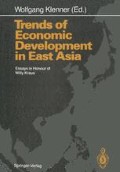Abstract
Amidst all the metamorphoses of economic reform measures adopted, especially in the agricultural and foreign trade sectors, in the post-Mao era in China, the state industrial system remains these days basically unchanged, in terms of what we know about the Stalinist legacy. It is still centrally controlled on the basis of state ownership. If anything, the degree of bureaucratization in Chinese industry is probably greater than anywhere else in the Soviet bloc. To be sure, quiet a number of new measures have been experimented with since 1979, with a view to improving efficiency in individual enterprises and overall industrial management. But generally speaking, the measures taken until recently, remain very much in the sphere of the Kosygin reform of 1965 [7]. Essentially these are reform measures aimed to improve efficiency within the Leninist principle of Khozraschyot, that is, economic accountability within the Stalinist framework of centralized planning and control. Only commencing late 1984, has there been a genuine move to gradually dismantle the Soviet-style central planning. And this should hopefully not compromise the established principle of socialist ownership. How good is the prospects for the Chinese to move towards a market-type economy, say, a la Oscar Lange?
Access this chapter
Tax calculation will be finalised at checkout
Purchases are for personal use only
Preview
Unable to display preview. Download preview PDF.
References
Berliner J S (1957) Factory and Manager in the USSR, Harvard University Press, Cambridge
Chen N, Hou C (1986) “China’s Inflation, 1979-1983: Measurement and Analysis”, Economic Development and Cultural Change, 34-4:811–853
Eucken W (1960) Grundsätze der Wirtschaftspolitik, J.C.B. Mohr (Paul Siebeck) Tübingen Zürich
Hensel K P (1979) Einführung in die Theorie der Zentralverwaltungswirtschaft, 3. Aufl., Gustav Fischer Verlag, Stuttgart
Hensel K P (1977) “Der Zwang zum wirtschaftspolitischen Experiment in zentral gelenkten Wirtschaften”, Jahrbücher für Nationalökonomie und Statistik, 184-4-5:349–359
Kornai J (1980) Economics of Shorgate, North-Holland, Amsterdam
Kueh Y Y (1985) “Economic Reform in Chinese Industry”, paper presented at the Workshop on Comparative Studies of Economic Reforms in China and Eastern Europa, sponsored by the School of Oriental and African Studies, University of London, London, 17 June 1985
Kueh Y Y (1984) “China’s New Agricultural-Policy Program: Major Economic Consequences, 1979-1983”, Journal of Comparative economics, 8-4:353–375
Liberman Y.G. (1965) “The Plan, Direct Ties, and Profitability” from Pravda, 21 November, 1965. Translated in The Current Digest of the Soviet Press, 15 December 1965
Liberman Y G (1962) “The Plan, Profits, and Bonuses”, Pravda, 9 September, 1962. Translated in The Current Digest of the Soviet Press, XIV-36:13–15
New China News Agency (Xinhua Tongxinshe) Daily news despatches from Beijing
Nove A (1964) Was Stalin Really Necessary? Allen and Unwin, London
People’s Daily (Renmin Ribao) Beijing
Perkins D H (1986) China: Asia’s Next Economic Giant? University of Washington Press, Seattle and London
State Statistical Bureau (1987) Zhongguo Tungji Nianjian 1986 (Chinese Statistical Year Book 1986), Beijing
Tidrick G (1987) “Planning and Supply”. In: Tidrick J, Chen J (eds) China’s Industrial Reform, Oxford University Press, New York, pp 175–209
Wiles P (1967) “Convergence: Possibility and Probability”. In: Balinky A. et al. (eds) Planning and the Market in the USSR: The 1960s, Rutgers University Press, New Brunswick, N.J., pp 89–118
Wong C P W (1986) “The Economics of Shortage and Problems of Reform in Chinese Industry”, Journal of Comparative Economics, 10-4:363–387
Wong X (1987) “Neidi Qiye Gaigede Jincheng” (Progress of Enterprise Reforms in China), Ta Kung Pao (Hong Kong), 26 November 1987
Zhao Z (1987) Forward on the Road of Socialism with Chinese Characteristics (Report delivered at the 13th National Party Congress of the Chinese Communist Party on 25th October 1987)—reprinted in all major Chinese newspapers
Author information
Authors and Affiliations
Editor information
Editors and Affiliations
Rights and permissions
Copyright information
© 1989 Springer Verlag Berlin · Heidelberg
About this chapter
Cite this chapter
Kueh, Y.Y. (1989). Bureaucratization and Economic Reform in Chinese Industry. In: Klenner, W. (eds) Trends of Economic Development in East Asia. Springer, Berlin, Heidelberg. https://doi.org/10.1007/978-3-642-73907-1_27
Download citation
DOI: https://doi.org/10.1007/978-3-642-73907-1_27
Publisher Name: Springer, Berlin, Heidelberg
Print ISBN: 978-3-642-73909-5
Online ISBN: 978-3-642-73907-1
eBook Packages: Springer Book Archive

